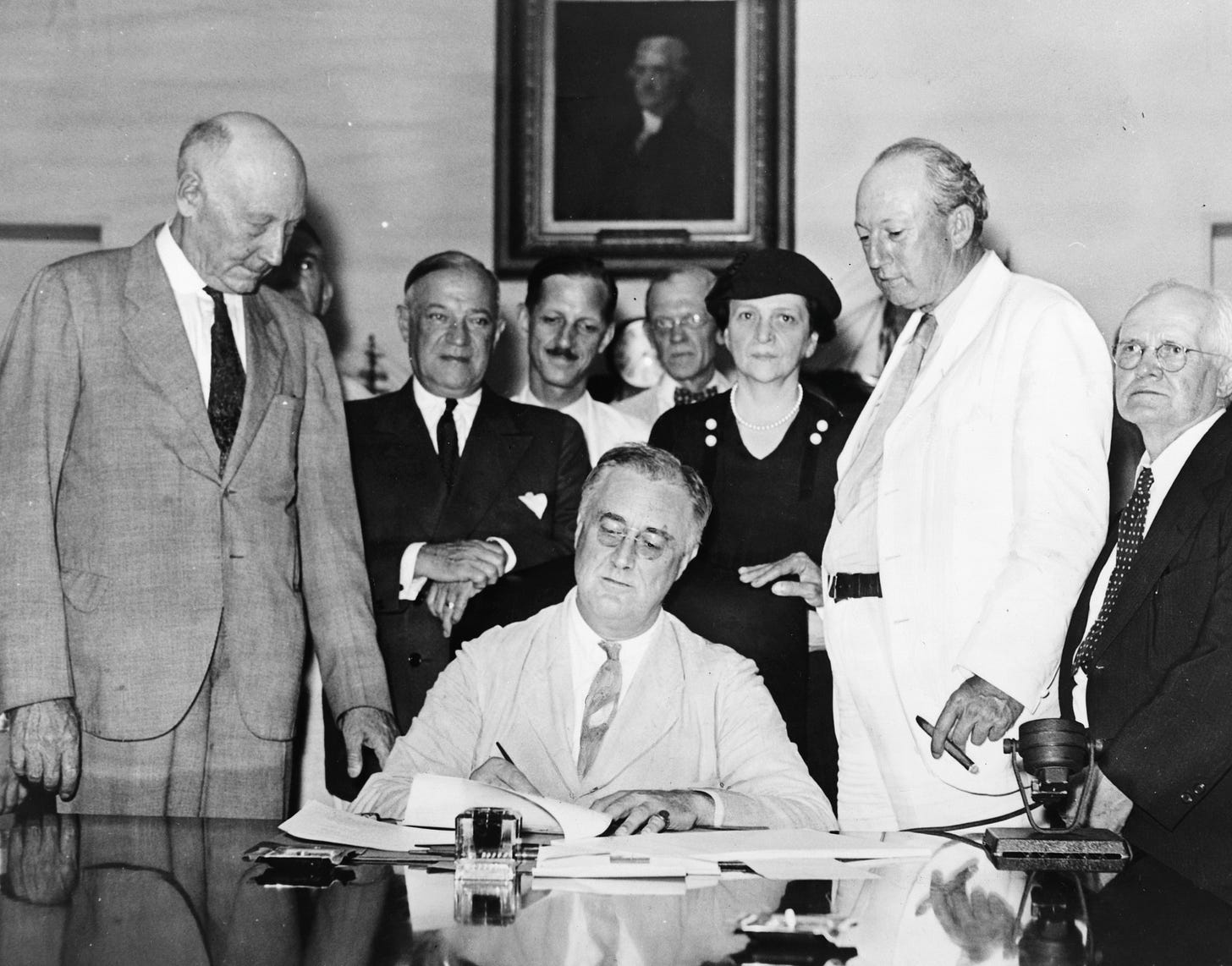The Future of Social Security
by Kathleen Romig and Lawrence M. Eppard

Kathleen Romig is Director of Social Security and Disability Policy at the Center on Budget and Policy Priorities and a Connors Forum Affiliated Scholar. She works in the areas of Social Security, Supplemental Security Income (SSI), paid leave, and other budget issues. Romig previously worked at the Social Security Administration, Social Security Advisory Board, and Congressional Research Service.
Lawrence M. Eppard is Director of the Connors Forum, Shippensburg University faculty member, and host of the Utterly Moderate Podcast. His research areas include economic and racial inequalities and post-truth trends in the U.S.
On last week’s podcast we were discussing declining fertility in the United States and its impact on programs like Social Security. Given this, we thought it might be useful to directly address the elephant in the room: just how much danger is the Social Security program facing?
Social Security is Successful and Popular
Social Security is one of the country’s most successful government programs. For most elderly Americans, the program provides a majority of their income. Social Security is also arguably America’s most effective poverty-fighting program, bringing elderly poverty down from almost 38% to less than 10%.
Additionally, it is important to remember that Social Security is a social insurance program. This means it will continue to pay benefits regardless of whether or not you outlive your total lifetime contribution, which a typical American retiree likely will. In this way, Social Security is the type of program you might design from behind a “veil of ignorance.” It is a program that ensures that you will have the means to survive in retirement, regardless of whether you were able to voluntarily save much during your working years or not, and regardless of whether you outlive your lifetime contribution or not.
Surveys show that the program remains very popular. Strong majorities of Americans—whether they be old or young, low- or high-income, Republican or Democrat—believe that it is crucial for the U.S. to preserve full Social Security benefits for future generations, even if it means increasing payroll taxes.
Will Social Security Be There for You?
Many Americans worry whether Social Security will be there when they retire. So will it be? The answer to that question is yes, even if we made no changes to the program at all.
Every two weeks the Social Security program receives an infusion of money from payroll taxes and that money pays for the benefits of current beneficiaries. As long as people are working there will be funding for those currently receiving benefits.
Alarmists who claim that Social Security will not be around when today’s young workers retire either misunderstand or misrepresent the projections. The question is not whether benefits will continue, but at what level.
In years past, the number of workers in the labor force, and the pool of payroll taxes they were providing, was large enough to support the number of beneficiaries. With falling American fertility rates this is no longer the case, so the amount of money provided by current workers is less than is needed for current beneficiaries. Full benefits continue because of the Social Security Trust Funds, which make up the difference. But those funds will be depleted sometime around 2034. At that point the program will not “go broke”—it will continue to pay out about 76% of promised benefits. If we do nothing, this is the future of Social Security.
The fundamental structure of Social Security is sound and the program can be adjusted to continue paying full benefits to future generations. In fact, the fixes are rather straightforward and manageable. The program could be made sustainable for the foreseeable future through a combination of (a) a slight increase in the payroll tax—perhaps increasing the current 6.2% to somewhere around 7%—for both employees and employers and (b) removal of the cap on taxable earnings (currently $147,000).
Shoring Up Social Security is a Choice
Making these changes is a choice. If we as a people value this program and want it to continue at full strength, there is no reason that we cannot make this choice.
President Franklin D. Roosevelt signed the Social Security Act on August 14, 1935. Upon signing the legislation he stated that:
“We can never insure one hundred percent of the population against one hundred percent of the hazards and vicissitudes of life, but we have tried to frame a law which will give some measure of protection to the average citizen and to his family against the loss of a job and against poverty-ridden old age.”
Social Security has indeed successfully insured millions of Americans against some of life’s unavoidable hazards and vicissitudes. We will all face the inevitable constraints of old age, such as reduced labor market participation and health challenges. Social arrangements and policy decisions can either constrain or enable our happiness and agency as we enter this period of our lives. Making logical, reasonable, and manageable adjustments to the Social Security program can help to ensure a basic level of security for millions of Americans for generations to come.1




